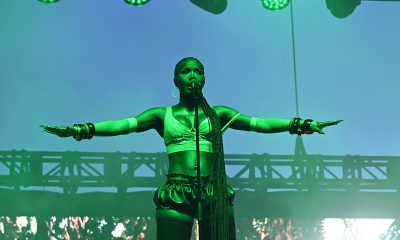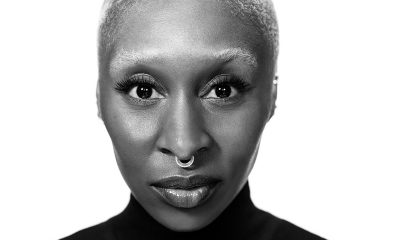a&e features
Dancing for ‘Queen’ Janet Jackson
Tyce Diorio reflects on his time with the icon as she prepares for Rock Hall induction
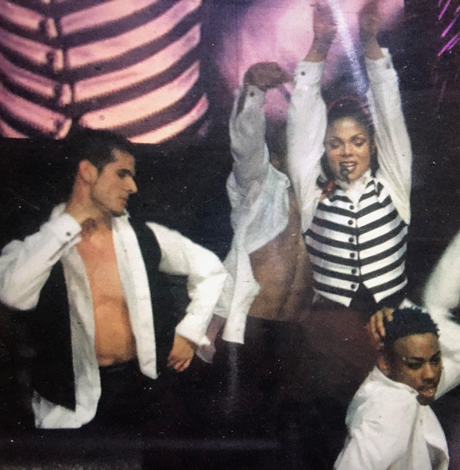
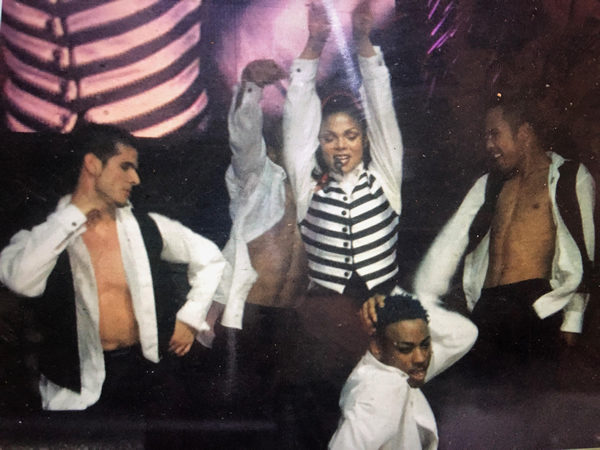
Janet Jackson has made innumerable contributions to popular culture, from chart-topping music to pioneering videos to memorable film roles. She’s a bestselling author, a philanthropist and outspoken advocate for racial, gender and LGBTQ equality. She’s a fashion icon, a sitcom star and award-winning writer.
But perhaps the work for which she will be best remembered is as a dancer.
From strutting alongside Paula Abdul in 1986’s breakthrough “Nasty” to her oft-imitated solo performance in “Pleasure Principal” to the militaristic “Rhythm Nation” to the mid-tempo grooves with Jennifer Lopez in “That’s the Way Love Goes” and beyond, Jackson has created some of the most iconic dance moves in modern music.
And so, as the Rock and Roll Hall of Fame belatedly prepares to induct Jackson on March 29, it seems fitting to talk to one of her best-known dancers, Tyce Diorio, about her legacy and her importance to the dance world.
Diorio first came to Jackson’s attention after he auditioned and was booked for her “If” video, the second singlefrom 1993’s “janet.” album. He said mastering Jackson’s intricate choreography can be like solving a math problem.
“Every part of the choreography of ‘If’ is a masterpiece,” Diorio said in an interview with the Blade. “[Choreographer] Tina Landon is such an expert at building a piece of work around an artist, she did it so well. You know good choreography when it’s still being done 25 years later. It feels so good to do even still today, it’s still relevant.”
After the “janet.” album, Diorio auditioned and was hired for the follow-up project, “The Velvet Rope,” accompanying Jackson on a hit world tour and appearing in more videos, including the No. 1 smash single “Together Again.” He describes that period of his career as life changing, performing all over the world and on major award shows.
“‘Velvet Rope’ was a masterpiece album,” Diorio said. “The tone and message were so brave and so individualized and personal but also resonated with us on the tour. And she really pushed the envelope creatively as artists should do.”
He described the tight bond that developed among the dancers and the close involvement Jackson had in all areas of production, from the dancers’ hairstyles to their moves.
“We had tattoos, piercings, different colored hair, no one was doing all that on the music scene. Janet has always been one of those artists that was groundbreaking,” he said. “It’s so rare that an artist is so involved in a project from the makeup and hair to the choreography, she was involved in every portion of it.”
Also on “The Velvet Rope” tour was the upstart group NSYNC, which Jackson featured as her opening act for part of the tour. So Diorio knew the group’s lead singer, Justin Timberlake, who would later share the stage with Jackson during her infamous Super Bowl performance.
“When NSYNC started as opening act they were very friendly and fun,” Diorio said. “We all had a nice rapport.”
Reflecting on the Super Bowl controversy, Diorio says, “things happen.”
“I thought the Super Bowl performance was fantastic and so well designed in terms of the set and choreography and the way Janet performed with the dancers,” he said. “So for me in terms of the controversy I don’t have any thoughts on that. What happened was an unfortunate situation that just happened and we all move on from it.” Agreed.
Jackson is known for letting her dancers share the spotlight and many have gone on to tremendous success on their own, from Abdul and Lopez to Jenna Dewan and Diorio, who won an Emmy Award for his work on “So You Think You Can Dance.” Diorio is in production on his 16th season as a judge on the hit show now, which will air this summer on Fox. The LA-based dancer/choreographer, who’s gay, also recently finished shooting a film in Europe called “High Strung.”
Diorio has danced and choreographed for a number of major pop stars, going on tour with Paula Abdul when he was just 19. Later, he appeared in Ricky Martin’s video for hit song “Livin’ La Vida Loca” and danced in Jennifer Lopez’s debut tour.
But it’s his work with Jackson that remains “transcendent.”
“When I took the stage with her it was an otherworldly experience. You can’t explain it fully. There are no words. It’s transcendent. You feel like you’re in another space and time, it’s such a journey.”
It’s difficult to put into words the experience of performing on stage in front of 20,000 screaming fans — the adrenalin rush and the stamina required to pull it off night after night — and the feeling when the tour ends.
“When the tours were over it was bittersweet but I go back to my life and that’s magical too,” Diorio says. “I feel lucky in my life whether I’m in front of millions of people or not. That’s the challenge in our business, separating those moments from the rest. It’s like a chapter in one’s life. All good things come to an end.”
Last year, Diorio received an unexpected call from Jackson’s team, inviting him along with many of her previous tour dancers to a reunion in L.A. and a blockbuster performance of “Rhythm Nation” at the Hollywood Bowl. The performance — part of her “State of the World Tour” — can be found on YouTube. In it, dancers from all of her previous tours take the stage to recreate those iconic moves. Then Jackson took time to introduce each dancer to the audience.
“Which artist would do something like this? There’s no one else who could pull this off,” Diorio recalls. “It was magical, we were all blown away. Being on the stage, we came together so seamlessly. We all knew each other, we were so inspired and motivated, an awe-inspiring moment. It only happens once. One for the books.”
Asked to name one Jackson song he’d like to choreograph, he said “Runaway.” His favorite choreography to perform? “Throb.” The hardest to perform? “Rhythm Nation.” What’s more stressful — performing on the “Oprah Winfrey Show” or “Saturday Night Live?” Oprah. “Because it’s Oprah!”
Diorio says it was an honor to dance for Jackson because she chooses all of her own dancers personally.
“Working with Janet and her being who she is, it’s something special … so you feel so special if she chooses you,” he said. “To the dance community she’s such an icon and such a queen. It was my absolute dream to dance for her.”
To say that Jackson’s career is in resurgence mode would be an understatement. In 2015, she released “Unbreakable,” her seventh No. 1 album, making her only the fourth act in music history to chart No. 1 albums in four consecutive decades (along with Barbra Streisand, Bruce Springsteen and U2). She followed that with the “Unbreakable” tour, took a break to have her son, Eissa, then launched her massively successful “State of the World Tour,” which played 76 dates across North America and two recent shows in Japan. She was last year’s Billboard Icon Award recipient, then picked up several more awards in 2018, including the Icon Award at the BMI R&B/Hip-Hop Awards; the Inspiration Award at the MNET Asian Music Awards; the MTV Europe Global Icon Award and the Impact Award from Radio Disney, to name a few.
In August, she debuted a new single, “Made for Now” with Daddy Yankee, her 20th No. 1 Billboard Dance single; a Spanish version spent a month atop the Mexican charts. In December, the Rock and Roll Hall of Fame announced she would — finally! — be inducted on March 29. And earlier this month, Jackson announced a 15-date Las Vegas residency called “Metamorphosis” beginning in May and will co-headline the U.K.’s Glastonbury Festival in June.
Given all her success, fans and critics have wondered why it took the Rock Hall so long to induct her. Jackson was first eligible in 2007.
“The important part is that she is being inducted now,” Diorio says. “It doesn’t always make sense, you have to keep doing what you do. In terms of Janet, it’s so great that she’s being honored in this way. Everything has its right time.”
Indeed, but others have speculated that a combination of the Super Bowl scandal and other less apparent factors led to the delayed induction. Perhaps Jackson’s most prominent cheerleader for Rock Hall induction is Mike Litherland, who has worked since 2012 to get Jackson into the Hall. He started a Facebook page that year titled, “Induct Janet Jackson into the Rock & Roll Hall of Fame,” which has more than 120,000 followers. Why does he think it took so long for the Hall to induct her?
“I blame the nomination committee from years and years ago,” Litherland said. “It still had that ‘boys club’ mentality. Thankfully, the R&R Hall of Fame Foundation completely overhauled their nomination committee in 2015 and brought in fresh, smart, music industry experts. They eliminated some of the dead weight and injected that new blood into the mix. They added several key women as well — previously there were only a handful of women. I think that had an incredibly positive impact.”
Litherland was in his car when he heard the news about Jackson’s induction.
“As soon as I heard Janet’s name, I leaned back a little in the car seat and just beamed from ear to ear,” he said. “And I have to admit that I got a little teary-eyed. It feels good to finally have Janet’s induction come full circle. I’m beyond thrilled for her because she’s so deserving of this honor.”
He’s attending the induction ceremony and hosting a pre-party, as well as an after-party featuring DJ Aktive, Jackson’s touring DJ. For information and tickets, visit the #InductJanet Facebook page.
Fans of other artists yet to be inducted have reached out for advice thanks to the success of Litherland’s social media campaign for Jackson. He’s heard from fans of Duran Duran, Whitney Houston, Carly Simon, George Michael and others hoping to emulate his success. So what’s next for Litherland’s campaign?
“I took a bit of a break from the #InductJanet social media pages after the induction announcement,” he said. “I just needed to take a breather. It’s tons of work and I’ve committed a lot of time, energy and money to the movement along the way. Ultimately, I think I’ll continue and just run it as a general Janet fan page since the Rock Hall focus is now officially behind us.”
Jackson will be inducted by Janelle Monae at the ceremony held at the Barclays Center in Brooklyn. The other six 2019 inductees are: The Cure, Def Leppard, Stevie Nicks, Radiohead, Roxy Music and The Zombies.
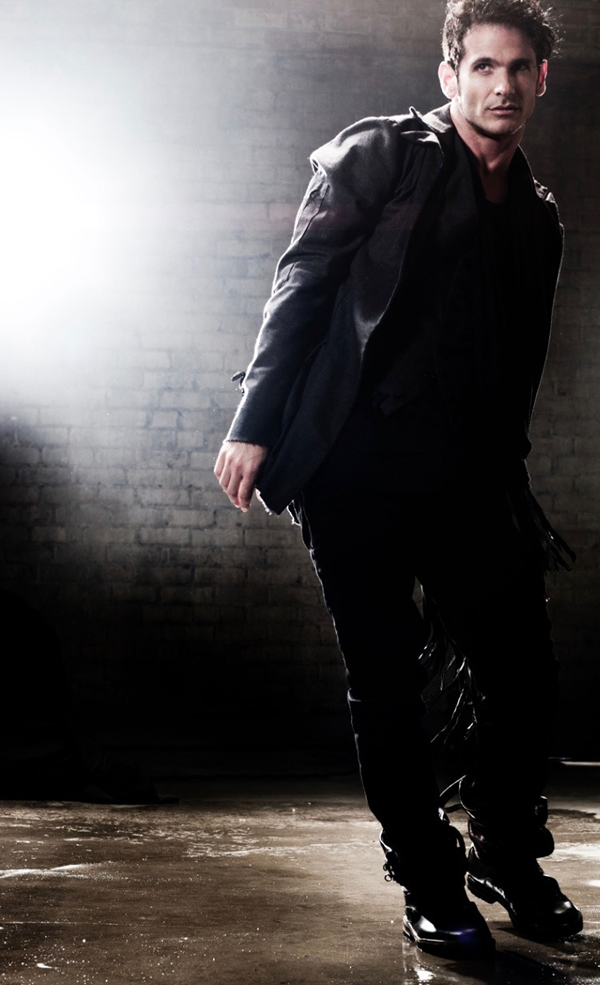
a&e features
Visit Cambridge, a ‘beautiful secret’ on Maryland’s Eastern Shore
New organization promotes town’s welcoming vibe, LGBTQ inclusion
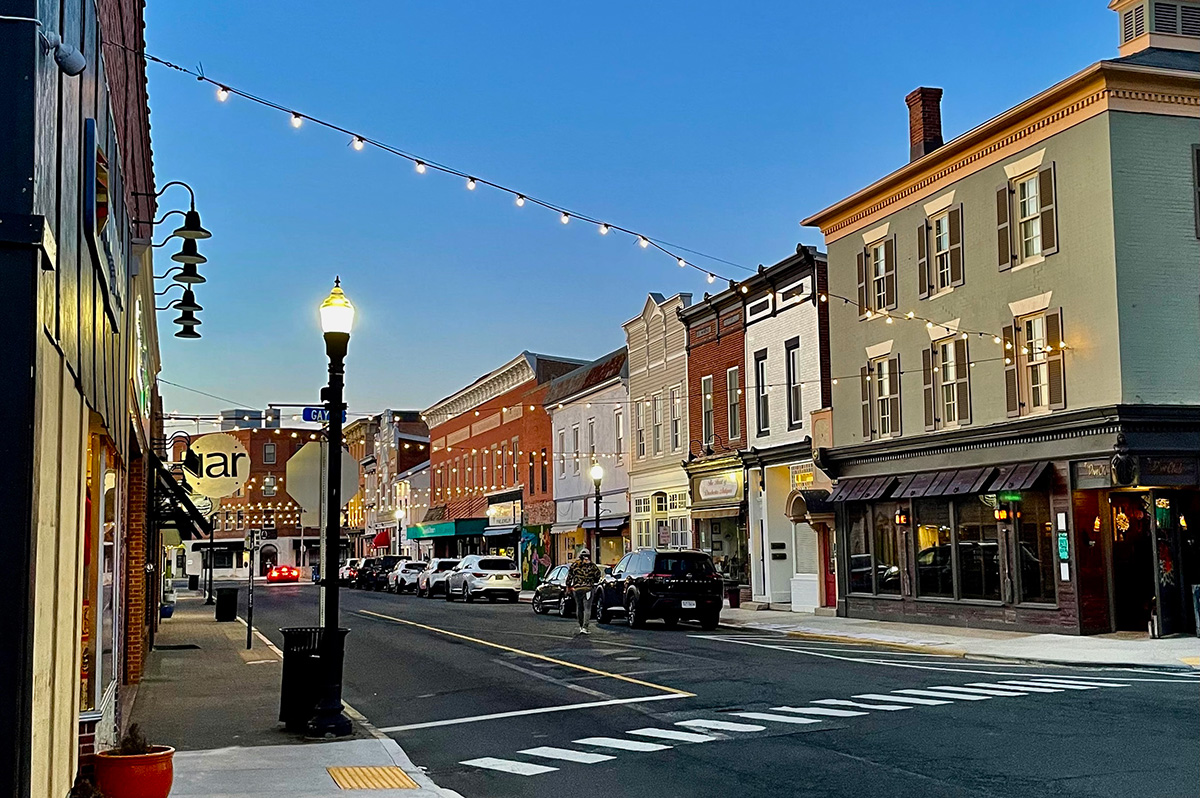
CAMBRIDGE, Md. — Driving through this scenic, historic town on Maryland’s Eastern Shore, you’ll be charmed by streets lined with unique shops, restaurants, and beautifully restored Victorian homes. You’ll also be struck by the number of LGBTQ Pride flags flying throughout the town.
The flags are a reassuring signal that everyone is welcome here, despite the town’s location in ruby red Dorchester County, which voted for Donald Trump over Kamala Harris by a lopsided margin. But don’t let that deter you from visiting. A new organization, Proudly Cambridge, is holding its debut Pride event this weekend, touting the town’s welcoming, inclusive culture.
“We stumbled on a beautiful secret and we wanted to help get the word out,” said James Lumalcuri of the effort to create Proudly Cambridge.
The organization celebrates diversity, enhances public spaces, and seeks to uplift all that Cambridge has to share, according to its mission statement, under the tagline “You Belong Here.”
The group has so far held informal movie nights and a picnic and garden party; the launch party is June 28 at the Cambridge Yacht Club, which will feature a Pride celebration and tea dance. The event’s 75 tickets sold out quickly and proceeds benefit DoCo Pride.
“Tickets went faster than we imagined and we’re bummed we can’t welcome everyone who wanted to come,” Lumalcuri said, adding that organizers plan to make “Cheers on the Choptank” an annual event with added capacity next year.
One of the group’s first projects was to distribute free Pride flags to anyone who requested one and the result is a visually striking display of a large number of flags flying all over town. Up next: Proudly Cambridge plans to roll out a program offering affirming businesses rainbow crab stickers to show their inclusiveness and LGBTQ support. The group also wants to engage with potential visitors and homebuyers.
“We want to spread the word outside of Cambridge — in D.C. and Baltimore — who don’t know about Cambridge,” Lumalcuri said. “We want them to come and know we are a safe haven. You can exist here and feel comfortable and supported by neighbors in a way that we didn’t anticipate when we moved here.”
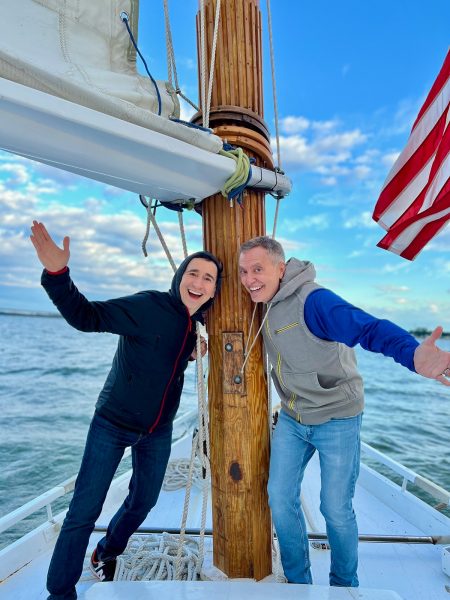
Lumalcuri, 53, a federal government employee, and his husband, Lou Cardenas, 62, a Realtor, purchased a Victorian house in Cambridge in 2021 and embarked on an extensive renovation. The couple also owns a home in Adams Morgan in D.C.
“We saw the opportunity here and wanted to share it with others,” Cardenas said. “There’s lots of housing inventory in the $300-400,000 range … we’re not here to gentrify people out of town because a lot of these homes are just empty and need to be fixed up and we’re happy to be a part of that.”
Lumalcuri was talking with friends one Sunday last year at the gazebo (affectionately known as the “gayzebo” by locals) at the Yacht Club and the idea for Proudly Cambridge was born. The founding board members are Lumalcuri, Corey van Vlymen, Brian Orjuela, Lauren Mross, and Caleb Holland. The group is currently working toward forming a 501(c)3.
“We need visibility and support for those who need it,” Mross said. “We started making lists of what we wanted to do and the five of us ran with it. We started meeting weekly and solidified what we wanted to do.”
Mross, 50, a brand strategist and web designer, moved to Cambridge from Atlanta with her wife three years ago. They knew they wanted to be near the water and farther north and began researching their options when they discovered Cambridge.
“I had not heard of Cambridge but the location seemed perfect,” she said. “I pointed on a map and said this is where we’re going to move.”
The couple packed up, bought a camper trailer and parked it in different campsites but kept coming back to Cambridge.
“I didn’t know how right it was until we moved here,” she said. “It’s the most welcoming place … there’s an energy vortex here – how did so many cool, progressive people end up in one place?”
Corey van Vlymen and his husband live in D.C. and were looking for a second home. They considered Lost River, W.Va., but decided they preferred to be on the water.
“We looked at a map on both sides of the bay and came to Cambridge on a Saturday and bought a house that day,” said van Vlymen, 39, a senior scientist at Booz Allen Hamilton. They’ve owned in Cambridge for two years.
They were drawn to Cambridge due to its location on the water, the affordable housing inventory, and its proximity to D.C.; it’s about an hour and 20 minutes away.
Now, through the work of Proudly Cambridge, they hope to highlight the town’s many attributes to residents and visitors alike.
“Something we all agree on is there’s a perception problem for Cambridge and a lack of awareness,” van Vlymen said. “If you tell someone you’re going to Cambridge, chances are they think, ‘England or Massachusetts?’”
He cited the affordability and the opportunity to save older, historic homes as a big draw for buyers.
“It’s all about celebrating all the things that make Cambridge great,” Mross added. “Our monthly social events are joyful and celebratory.” A recent game night drew about 70 people.
She noted that the goal is not to gentrify the town and push longtime residents out, but to uplift all the people who are already there while welcoming new visitors and future residents.
They also noted that Proudly Cambridge does not seek to supplant existing Pride-focused organizations. Dorchester County Pride organizes countywide Pride events and Delmarva Pride was held in nearby Easton two weeks ago.
“We celebrate all diversity but are gay powered and gay led,” Mross noted.
To learn more about Proudly Cambridge, visit the group on Facebook and Instagram.
What to see and do
Cambridge, located 13 miles up the Choptank River from the Chesapeake Bay, has a population of roughly 15,000. It was settled in 1684 and named for the English university town in 1686. It is home to the Harriet Tubman Museum, mural, and monument. Its proximity to the Blackwater National Wildlife Refuge makes it a popular stop for birders, drawn to more than 27,000 acres of marshland dubbed “the Everglades of the north.”
The refuge is walkable, bikeable, and driveable, making it an accessible attraction for all. There are kayaking and biking tours through Blackwater Adventures (blackwateradventuresmd.com).
Back in town, take a stroll along the water and through historic downtown and admire the architecture. Take in the striking Harriet Tubman mural (424 Race St.). Shop in the many local boutiques, and don’t miss the gay-owned Shorelife Home and Gifts (421 Race St.), filled with stylish coastal décor items.
Stop for breakfast or lunch at Black Water Bakery (429 Race St.), which offers a full compliment of coffee drinks along with a build-your-own mimosa bar and a full menu of creative cocktails.
The Cambridge Yacht Club (1 Mill St.) is always bustling but you need to be a member to get in. Snapper’s on the water is temporarily closed for renovations. RaR Brewing (rarbrewing.com) is popular for craft beers served in an 80-year-old former pool hall and bowling alley. The menu offers burgers, wings, and other bar fare.
For dinner or wine, don’t miss the fantastic Vintage 414 (414 Race St.), which offers lunch, dinner, wine tasting events, specialty foods, and a large selection of wines. The homemade cheddar crackers, inventive flatbreads, and creative desserts (citrus olive oil cake, carrot cake trifle) were a hit on a recent visit.
Also nearby is Ava’s (305 High St.), a regional chain offering outstanding Italian dishes, pizzas, and more.
For something off the beaten path, visit Emily’s Produce (22143 Church Creek Rd.) for its nursery, produce, and prepared meals.
“Ten minutes into the sticks there’s a place called Emily’s Produce, where you can pay $5 and walk through a field and pick sunflowers, blueberries, you can feed the goats … and they have great food,” van Vlymen said.
As for accommodations, there’s the Hyatt Regency Chesapeake Bay (100 Heron Blvd. at Route 50), a resort complex with golf course, spa, and marina. Otherwise, check out Airbnb and VRBO for short-term rentals closer to downtown.
Its proximity to D.C. and Baltimore makes Cambridge an ideal weekend getaway. The large LGBTQ population is welcoming and they are happy to talk up their town and show you around.
“There’s a closeness among the neighbors that I wasn’t feeling in D.C.,” Lumalcuri said. “We look after each other.”
a&e features
James Baldwin bio shows how much of his life is revealed in his work
‘A Love Story’ is first major book on acclaimed author’s life in 30 years

‘Baldwin: A Love Story’
By Nicholas Boggs
c.2025, FSG
$35/704 pages
“Baldwin: A Love Story” is a sympathetic biography, the first major one in 30 years, of acclaimed Black gay writer James Baldwin. Drawing on Baldwin’s fiction, essays, and letters, Nicolas Boggs, a white writer who rediscovered and co-edited a new edition of a long-lost Baldwin book, explores Baldwin’s life and work through focusing on his lovers, mentors, and inspirations.
The book begins with a quick look at Baldwin’s childhood in Harlem, and his difficult relationship with his religious, angry stepfather. Baldwin’s experience with Orilla Miller, a white teacher who encouraged the boy’s writing and took him to plays and movies, even against his father’s wishes, helped shape his life and tempered his feelings toward white people. When Baldwin later joined a church and became a child preacher, though, he felt conflicted between academic success and religious demands, even denouncing Miller at one point. In a fascinating late essay, Baldwin also described his teenage sexual relationship with a mobster, who showed him off in public.
Baldwin’s romantic life was complicated, as he preferred men who were not outwardly gay. Indeed, many would marry women and have children while also involved with Baldwin. Still, they would often remain friends and enabled Baldwin’s work. Lucien Happersberger, who met Baldwin while both were living in Paris, sent him to a Swiss village, where he wrote his first novel, “Go Tell It on the Mountain,” as well as an essay, “Stranger in the Village,” about the oddness of being the first Black person many villagers had ever seen. Baldwin met Turkish actor Engin Cezzar in New York at the Actors’ Studio; Baldwin later spent time in Istanbul with Cezzar and his wife, finishing “Another Country” and directing a controversial play about Turkish prisoners that depicted sexuality and gender.
Baldwin collaborated with French artist Yoran Cazac on a children’s book, which later vanished. Boggs writes of his excitement about coming across this book while a student at Yale and how he later interviewed Cazac and his wife while also republishing the book. Baldwin also had many tumultuous sexual relationships with young men whom he tried to mentor and shape, most of which led to drama and despair.
The book carefully examines Baldwin’s development as a writer. “Go Tell It on the Mountain” draws heavily on his early life, giving subtle signs of the main character John’s sexuality, while “Giovanni’s Room” bravely and openly shows a homosexual relationship, highly controversial at the time. “If Beale Street Could Talk” features a woman as its main character and narrator, the first time Baldwin wrote fully through a woman’s perspective. His essays feel deeply personal, even if they do not reveal everything; Lucian is the unnamed visiting friend in one who the police briefly detained along with Baldwin. He found New York too distracting to write, spending his time there with friends and family or on business. He was close friends with modernist painter Beauford Delaney, also gay, who helped Baldwin see that a Black man could thrive as an artist. Delaney would later move to France, staying near Baldwin’s home.
An epilogue has Boggs writing about encountering Baldwin’s work as one of the few white students in a majority-Black school. It helpfully reminds us that Baldwin connects to all who feel different, no matter their race, sexuality, gender, or class. A well-written, easy-flowing biography, with many excerpts from Baldwin’s writing, it shows how much of his life is revealed in his work. Let’s hope it encourages reading the work, either again or for the first time.
a&e features
Looking back at 50 years of Pride in D.C
Washington Blade’s unique archives chronicle highs, lows of our movement
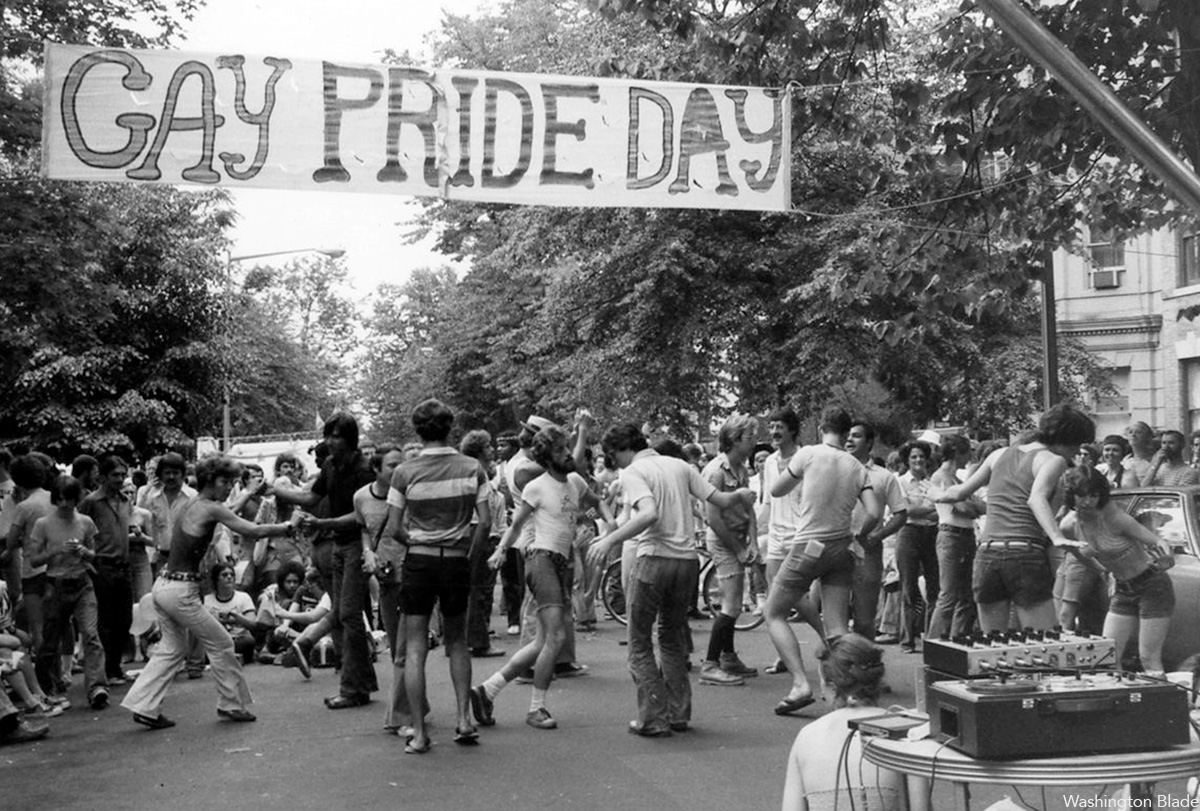
To celebrate the 50th anniversary of LGBTQ Pride in Washington, D.C., the Washington Blade team combed our archives and put together a glossy magazine showcasing five decades of celebrations in the city. Below is a sampling of images from the magazine but be sure to find a print copy starting this week.
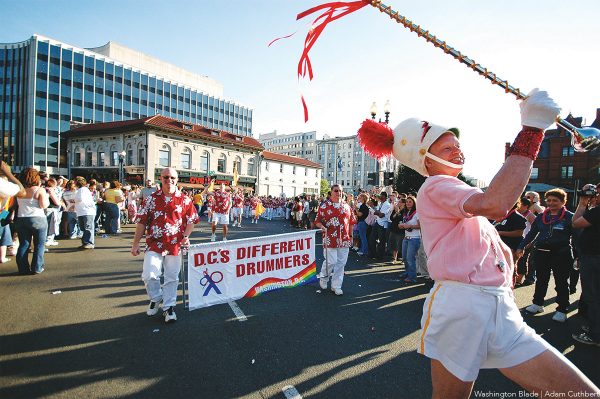
The magazine is being distributed now and is complimentary. You can find copies at LGBTQ bars and restaurants across the city. Or visit the Blade booth at the Pride festival on June 7 and 8 where we will distribute copies.
Thank you to our advertisers and sponsors, whose support has enabled us to distribute the magazine free of charge. And thanks to our dedicated team at the Blade, especially Photo Editor Michael Key, who spent many hours searching the archives for the best images, many of which are unique to the Blade and cannot be found elsewhere. And thanks to our dynamic production team of Meaghan Juba, who designed the magazine, and Phil Rockstroh who managed the process. Stephen Rutgers and Brian Pitts handled sales and marketing and staff writers Lou Chibbaro Jr., Christopher Kane, Michael K. Lavers, Joe Reberkenny along with freelancer and former Blade staffer Joey DiGuglielmo wrote the essays.

The magazine represents more than 50 years of hard work by countless reporters, editors, advertising sales reps, photographers, and other media professionals who have brought you the Washington Blade since 1969.
We hope you enjoy the magazine and keep it as a reminder of all the many ups and downs our local LGBTQ community has experienced over the past 50 years.
I hope you will consider supporting our vital mission by becoming a Blade member today. At a time when reliable, accurate LGBTQ news is more essential than ever, your contribution helps make it possible. With a monthly gift starting at just $7, you’ll ensure that the Blade remains a trusted, free resource for the community — now and for years to come. Click here to help fund LGBTQ journalism.
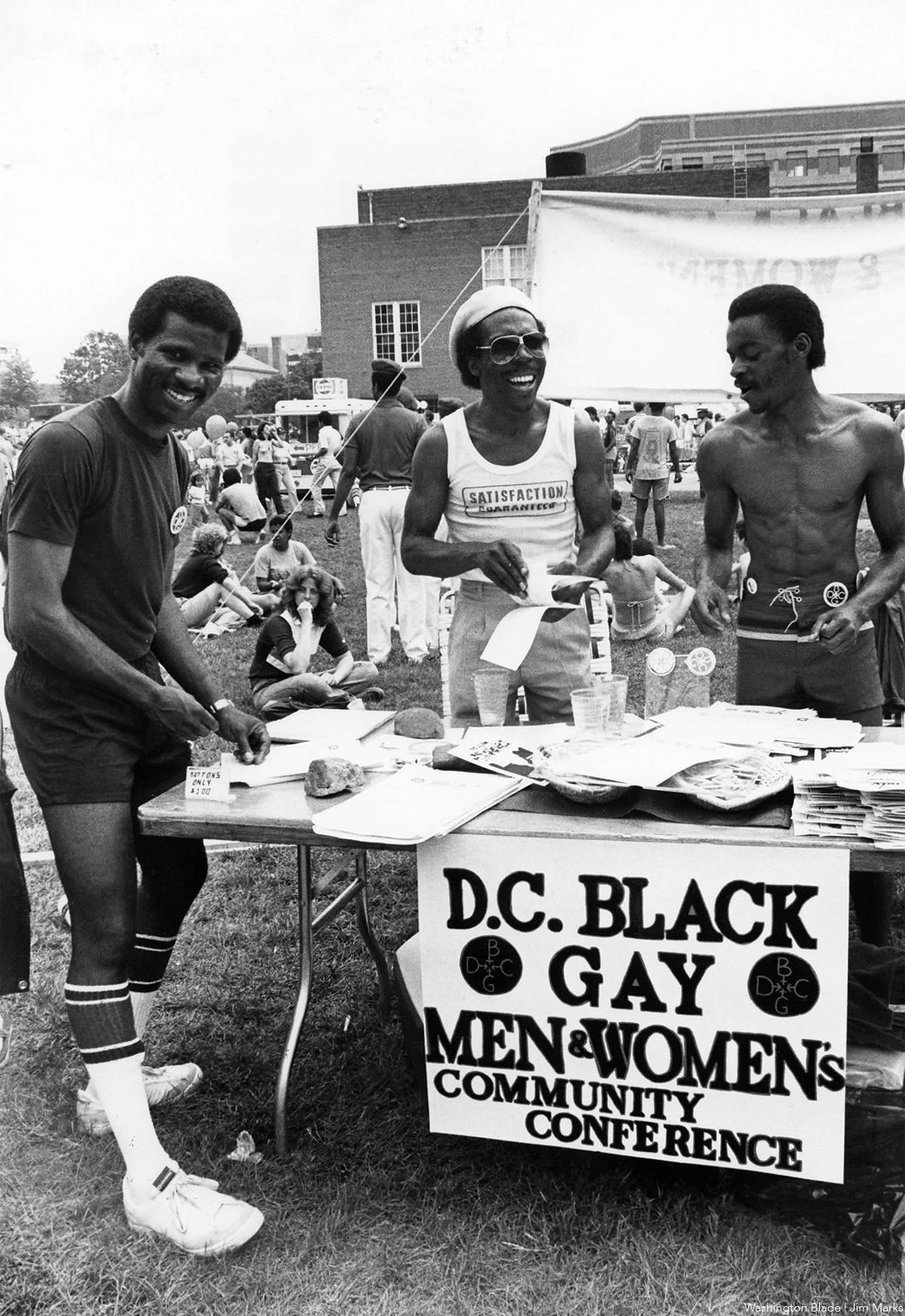
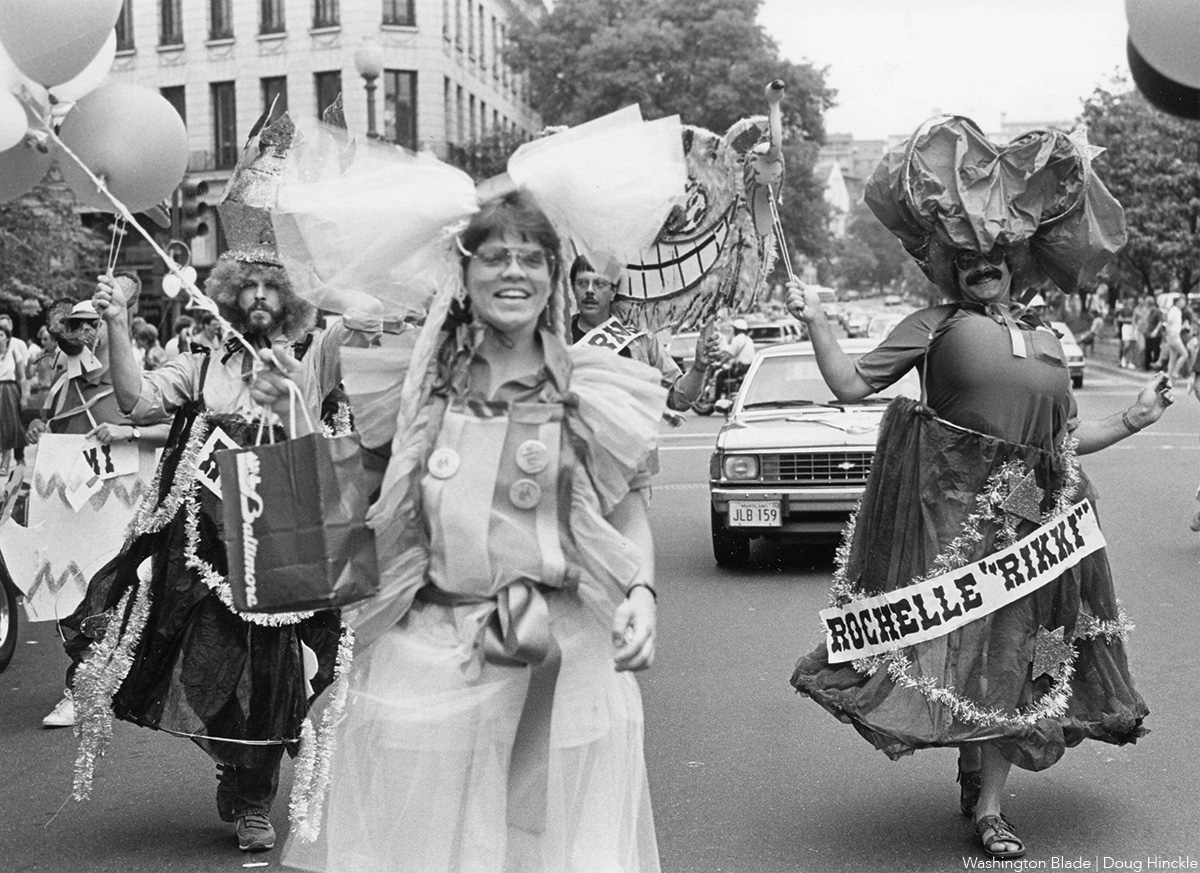

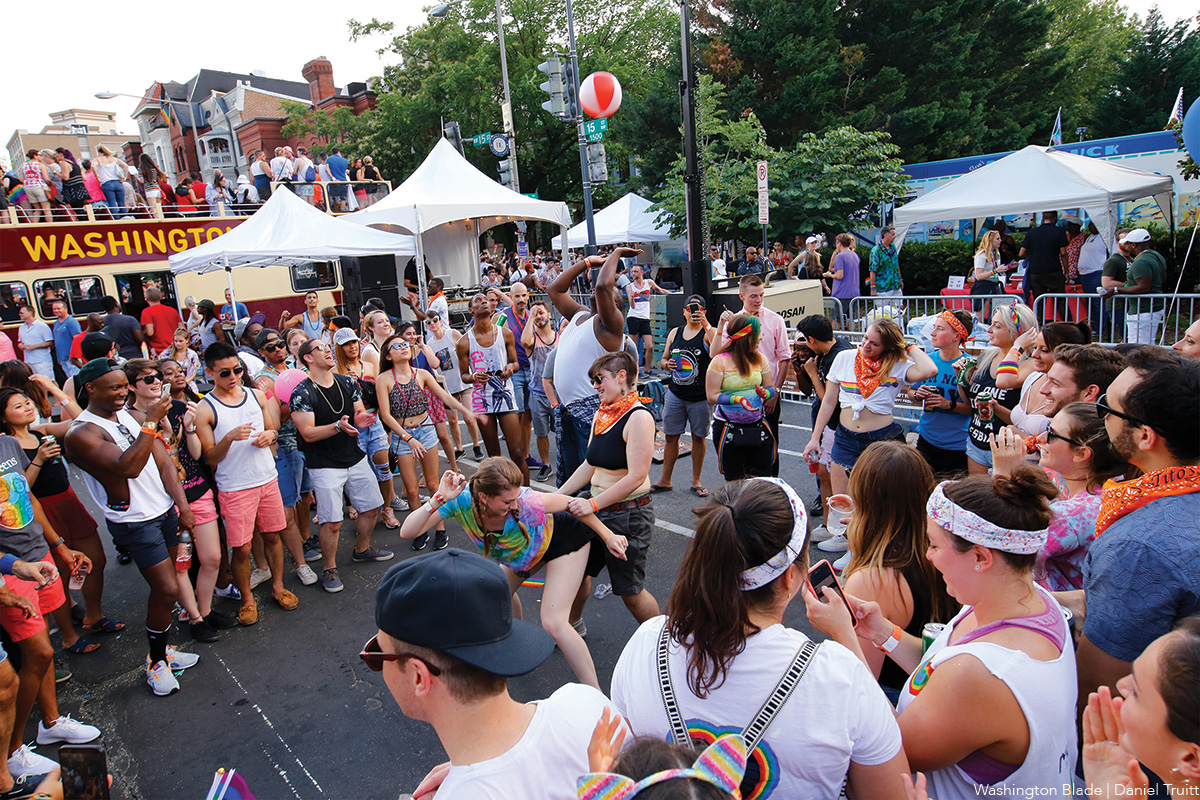
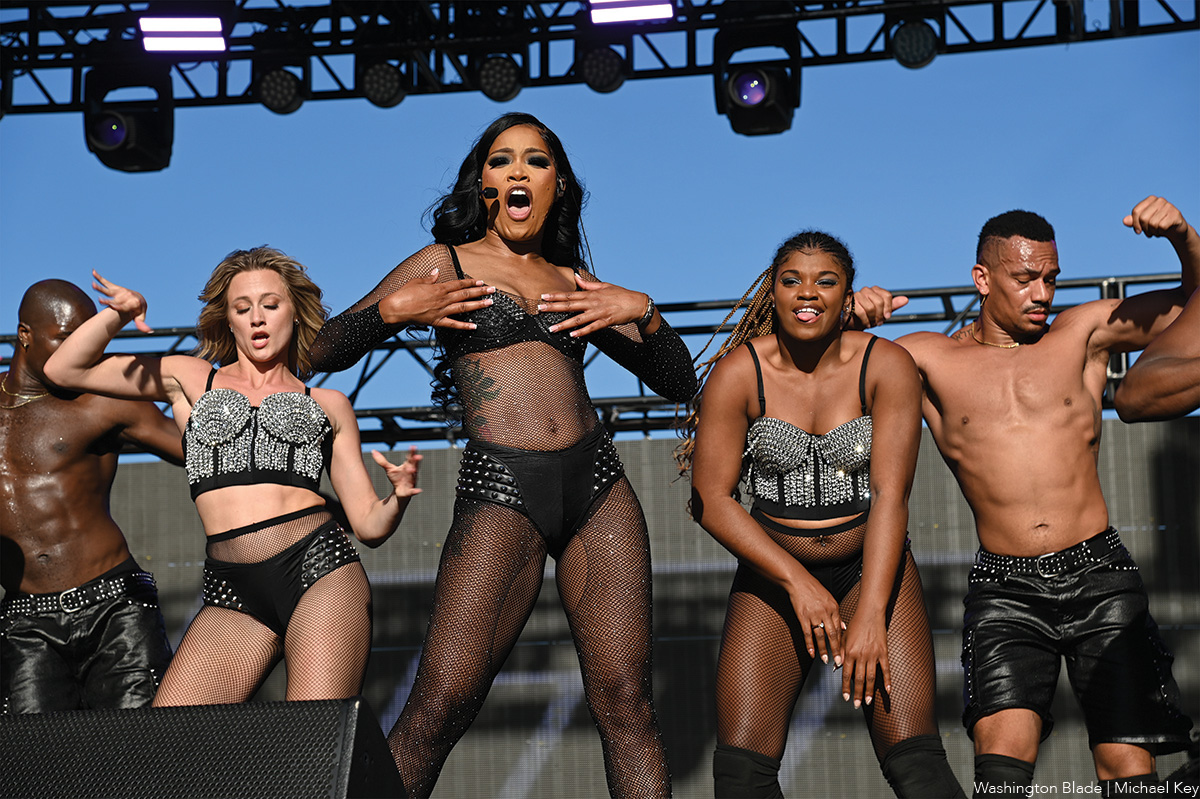
-

 U.S. Supreme Court5 days ago
U.S. Supreme Court5 days agoSupreme Court upholds ACA rule that makes PrEP, other preventative care free
-

 U.S. Supreme Court5 days ago
U.S. Supreme Court5 days agoSupreme Court rules parents must have option to opt children out of LGBTQ-specific lessons
-

 District of Columbia5 days ago
District of Columbia5 days agoActivists protest outside Hungarian Embassy in DC
-

 Virginia4 days ago
Virginia4 days agoSpanberger touts equality, reproductive rights in Arlington

